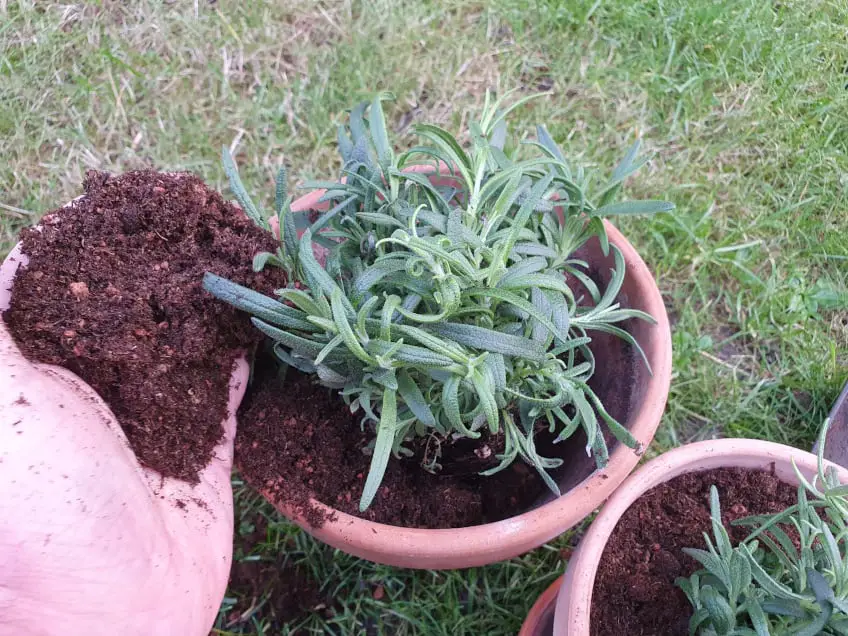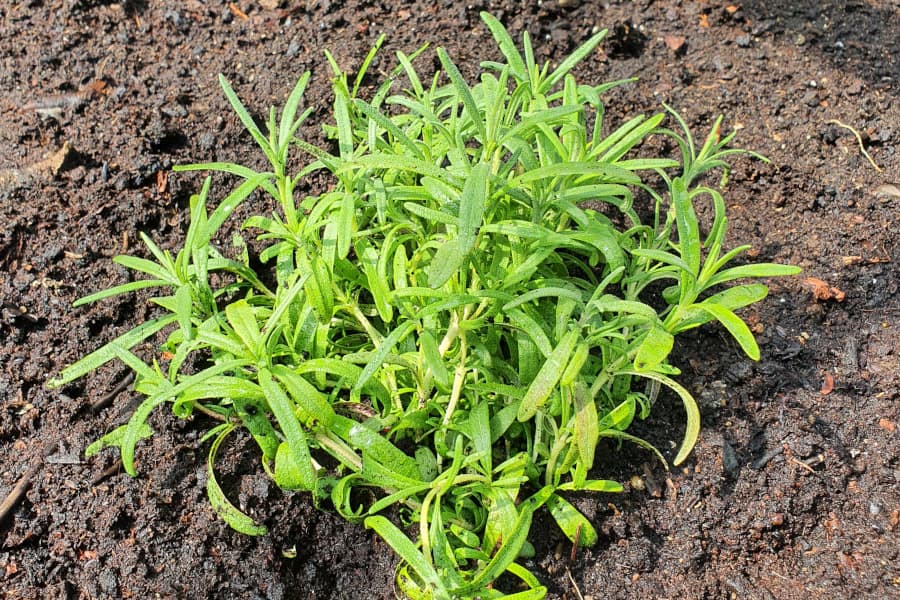This post contains affiliate links.
One time, I had some problems with a rosemary plant I was growing. Some of the branches and leaves were starting to turn brown and get dry and I realized that I had been overwatering it. I spoke to one of the gardeners at a large, local garden center and asked him for some tips on how to save my plant and they worked great. I have written this post to share what I learned.
To save overwatered rosemary, prune the plant by removing any branches and leaves that are brown and dry. Make sure the plant grows in soil with good drainage, either in a pot or directly in the ground. Water the plant when the top of the soil is dry, but never let the soil be completely dry or completely soaked.
Below, I go much more in-depth and explain exactly what you can do to save your rosemary plant if you have given it too much water as well as what you can do to avoid overwatering it in the future.

What Can You Do to Save an Overwatered Rosemary?
When I realized I had been overwatering my rosemary, I spoke to a gardener at the local garden center to ask for some advice on how to save it. The gardener I spoke to gave me an excellent and thorough explanation and shared some great tips that I want to share with you in this post.
The first sign that you have been watering your rosemary too much is that some of the branches and leaves will start to dry out and turn brown. It may be a bit alarming when you first notice this, at least it was for me, but as it turns out, there is nothing to worry about (at least not yet) as there are a couple of very simple things you can do to save your rosemary.
The tips I got from the gardener can be put into 3 categories, pruning, drainage, and fertilizing.
Pruning
This is what I learned about how to prune your overwatered rosemary and why it is important to do.
The first thing you should do when saving overwatered rosemary is to prune the plant by removing any branches and leaves that have dried out and turned brown. Use some sterilized pruning shears to remove the dry, brown branches and leaves to avoid damaging the plant.
If you don’t already have pruning shears, I highly recommend getting some. They don’t have to be overly fancy or anything, so just find some that you like. I use these (link to Amazon) and I am really happy with them.
The cuttings don’t have to go to waste just because they are dry. You can use them in cooking where they work perfectly fine. Just make sure there is no mold or anything on the cuttings before you cook with them.
Continue to keep an eye on your rosemary and remove any brown, dry growth as soon as you see it.
It is also important not to prune your rosemary too aggressively when trying to save it after overwatering it. I recommend removing the brown and dry branches and leaves but nothing else at this point.
Depending on how large your rosemary plant is and how much of it is brown and dry, you may want to prune it over some time by removing a few of the dry and brown branches and leaves every day rather than removing all of them at the same time.
Regardless if your rosemary has been getting too much water or not, it is a good idea to prune it sometimes.
Pruning rosemary sometimes is a good idea since cutting off branches will promote new growth and result in a healthier, more bushy plant. Do not prune too aggressively by cutting too many branches at once since this can stress the plant and inhibit growth.
Drainage
Another thing the gardener I spoke to clarified was the importance of growing your rosemary in a spot where the soil is being drained properly since constant water around the roots can result in root rot.
If you are growing rosemary directly in the ground, it will usually have good, natural drainage. If you grow rosemary in a pot or a container, make sure there is sufficient drainage.
I (almost) always use some very standard terra cotta pots (like these) for anything I grow in pots. They just seem to work tremendously well at protecting the plants and the soil while providing good drainage and on top of that, they look nice.
Fertilizing
Lastly, the gardener I spoke to told me about how to fertilize overwatered rosemary and while rosemary does not need a lot of fertilizer compared to many other plants, there are times when it can be a great idea to feed your rosemary a bit.
If some of the leaves on your rosemary are turning yellow, it can be due to a lack of nutrients so when you see this, try to give it some fertilizer.
I always recommend using organic fertilizers. I like the ones you mix with the water before watering your plants but there are many different types and you should use a fertilizer that works for you.
Now that you know how to save overwatered rosemary, let us take a look at what you can do to avoid it in the future.
How to Avoid Overwatering Rosemary

When I learned what I needed about how to save my overwatered rosemary, I asked for some tips on how to avoid the problem in the future.
The most important thing you can do to avoid overwatering rosemary is to water it on a consistent schedule and never let the soil become completely dry or completely soaked. Rosemary growing in pots should be watered more often than rosemary growing in the ground and the larger the plant is, the more water it needs.
Since there are so many factors at play, it is impossible to give an exact answer to how often you should water your rosemary to keep it healthy and avoid overwatering but here are a few questions you can ask yourself to help you find out how often you should do it.
- Growing in a pot or the ground?
- Rosemary growing in pots need to be watered much more often than rosemary growing directly in the ground. This is especially true for old, large plants since they have had time to develop a large, extensive root system that seeks out water in the ground.
- The only water that is available to potted rosemary plants is the water you give it and the water it gets from the rain.
- What climate are you growing in?
- If you live in a warm, dry climate with a lot of sunlight, you need to water much more often than if you live in a colder climate. Especially if you have many hours of direct sunlight since the soil can then dry out fast.
- If you live in a colder climate where you get rain, you may not have to ever water your rosemary if it is large and grows directly in the ground. Young or potted rosemary should still be watered.
- How is your soil?
- Some soil retains water and moisture much better than other soil. The soil has a big impact on how often you need to water rosemary.
- You can use a mulch to help your soil retain water and moisture better.
- How large is your rosemary?
- No matter if you are growing rosemary directly in the ground or in a pot or a container, larger plants need more water.
- The exception to this rule is that large plants that grow directly in the ground generally do not need watering more than every few weeks since they can often sustain themselves for a while on just the water that is found naturally in the ground.
The most important thing you can do to protect your rosemary and avoid overwatering is to make sure the soil is never completely dry and never completely soaked.
To give a more specific example, I can tell you about what I did for my own rosemary.
The rosemary I had to save after overwatering it was growing in a pot and was about 1 foot (30 cm) tall at the time.
The gardener I spoke to recommended trying to water my plant twice a week and skipping one of the two times if it rained. I just had to make sure it never dried out completely. And it worked!
The consistent watering schedule combined with the pruning I explained earlier in this post saved my rosemary after I had overwatered it so I highly encourage you to try it as well if you have the same problem.
